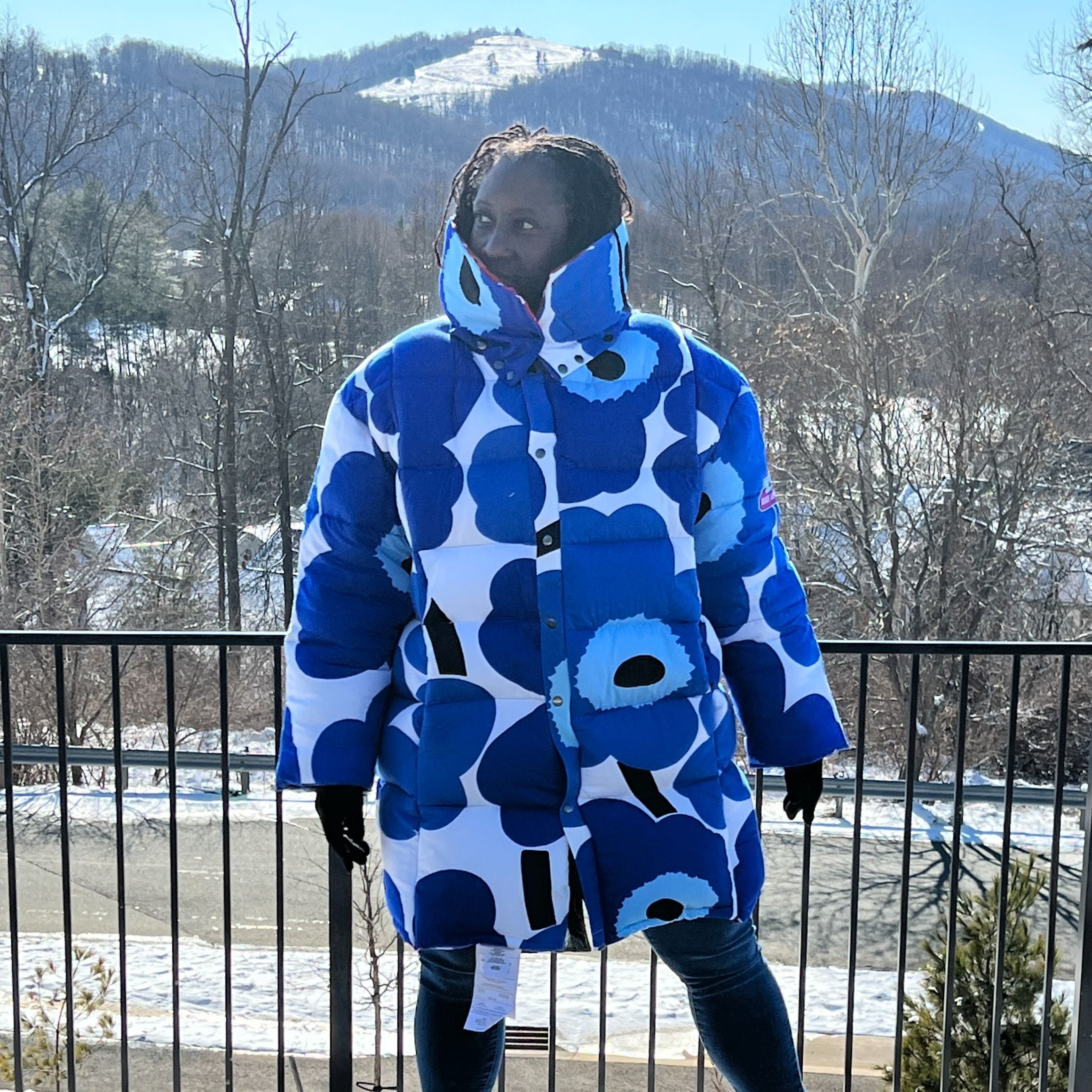Support the Stitch Please podcast and Black Women Stitch
Buy these amazing STITCH PLEASE pattern weights Made by Bianca Springer of Thanks I Made Them! 20% of September purchases will be donated to us!
$15 to the Paypal account for a Black Women Stitch lapel pin! DM or email your mailing to address for free USA shipping. You can also use Cash App
Sustained financial support also appreciated here:
For as little as $2 a month, your Patreon support means a lot: Join here Patreon
FREE SUPPORT Is also appreciated. Please rate, review, subscribe to the podcast. Tell a friend to do the same!
Learn more about Sahara Clemons!
Sahara Clemons is a multimedia artist, designer and activist born in Washington, D.C., and based in Charlottesville, Virginia. Playing with both the traditional and unconventional, Clemons creates paintings on wood and fabric, wearable art and fashion design. Her work confronts interpersonal and intersectional concepts and provides commentary on the historic, political and social trauma of people of color and its effect on shaping identity. Her work has been shown at the Virginia Museum of Fine Arts, Second Street Gallery, The Bridge Progressive Arts Institute and McGuffey Art Center. Clemons is a YoungArts alumni and is currently pursuing a Bachelor of Fine Arts degree from Rhode Island School of Design. From Cville Tomorrow.
More information on Sahara:
Follow her on Instagram
Her TedX Talk Art as Conversation
On the installation of her 2020 mural.
The Fall 2018 SOUP. Sahara won.
About her McGuffey Art Studio Residency
Other mentions: The Nap Ministry is a vital project. Check it out.
Sign up for the Black Women Stitch quarterly newsletter
Check out our merch here
Leave a BACKSTITCH message and tell us about your favorite episode.
Join the Black Women Stitch Patreon
Check out our Amazon Store
Stay Connected:
YouTube: Black Women Stitch
Instagram: Black Women Stitch
Facebook: Stitch Please Podcast


